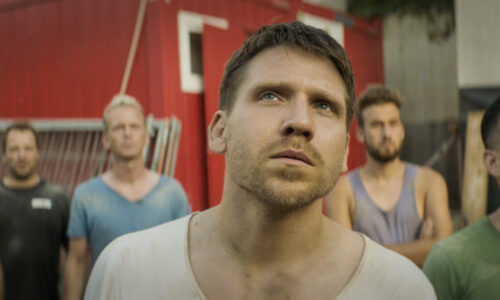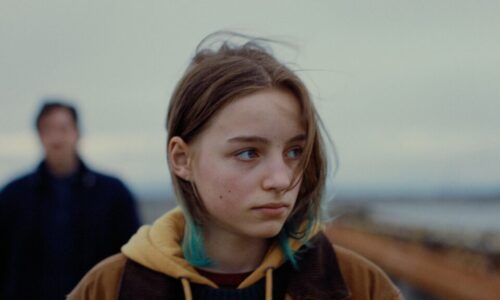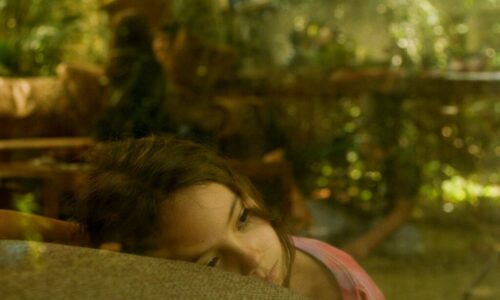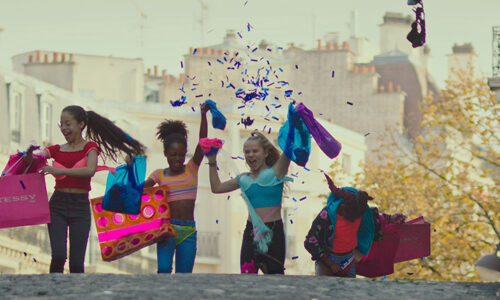Title: Una escuela en Cerro Hueso | A school in Cerro Hueso | Eine Schule in Cerro Hueso von Betania Cappato
While her mother has draped a few lifeless fish sorted by size in a silver bowl and examines them with some meticulousness, Ema (her daughter) silently moves in front of her. The mother continues to examine, moves Ema carefully and with deliberate movement to the side again, and Ema devotes herself to her little plastic horse, which she lets ride over an allotted area at the table.
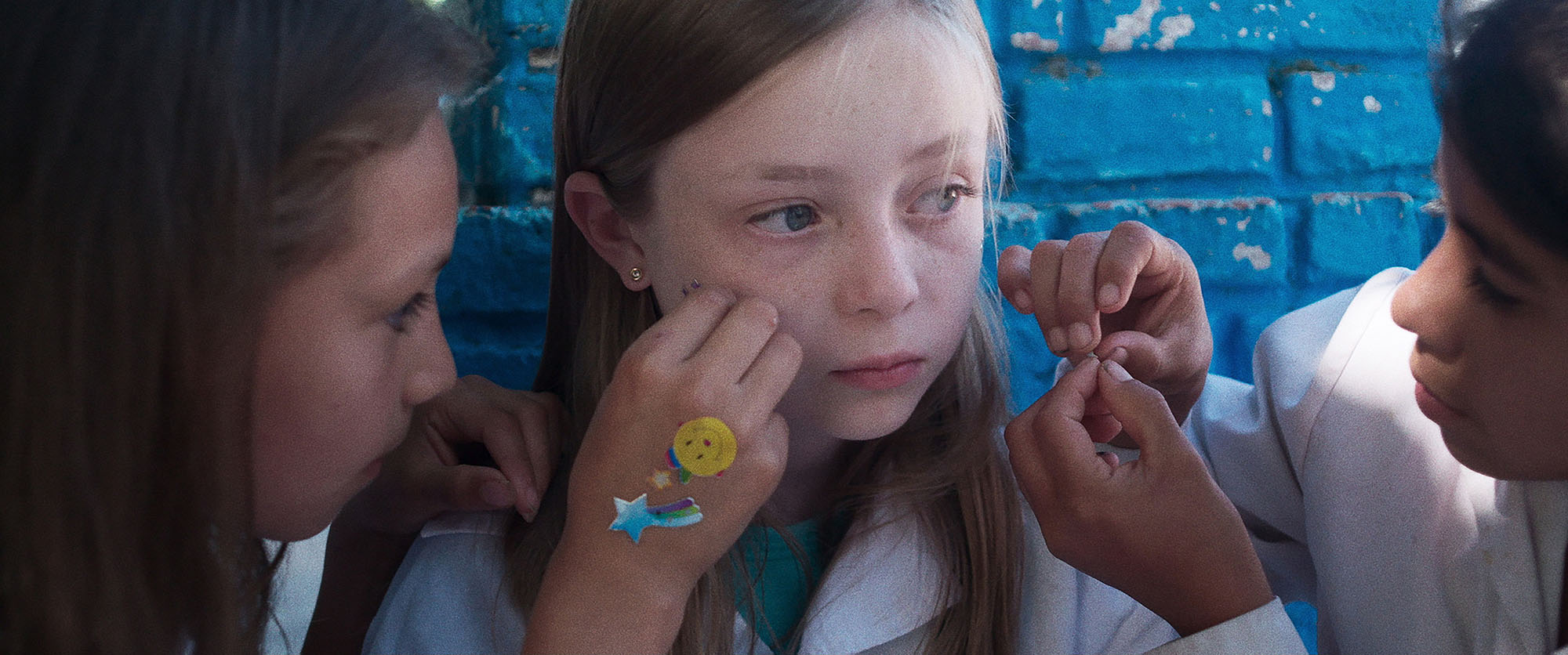
As they drive home, they hear a scientific report on the radio about the current changes in nature and the population of fish. Ema is sitting in the back seat, quietly looking around.
We see both parents together with Ema at an interview in a school. The principal very kindly explains that they are a very small school and that they welcome any support in the daily school life. Each of the teachers is very passionate about their work. But the most important question is why both parents want to have their Ema in this remote village school in Cerro Hueso, when they originally lived in the city. The parents’ looks become a bit more serious and they reveal that this school, after 17 other attempts, was the only one willing to accept Ema. They have asked many schools, but all of them have refused.
Ema is a little different, that is clear now. She was diagnosed with Autism Spectrum Disorder (ASD for short), although this word is not mentioned in the film until shortly before the end credits. Her parents naturally want to offer their daughter a good and safe environment in which she can grow up and learn. The school seems to be a stroke of luck and after the school administration has given the acceptance for Ema, the relief is written in the face of both parents.
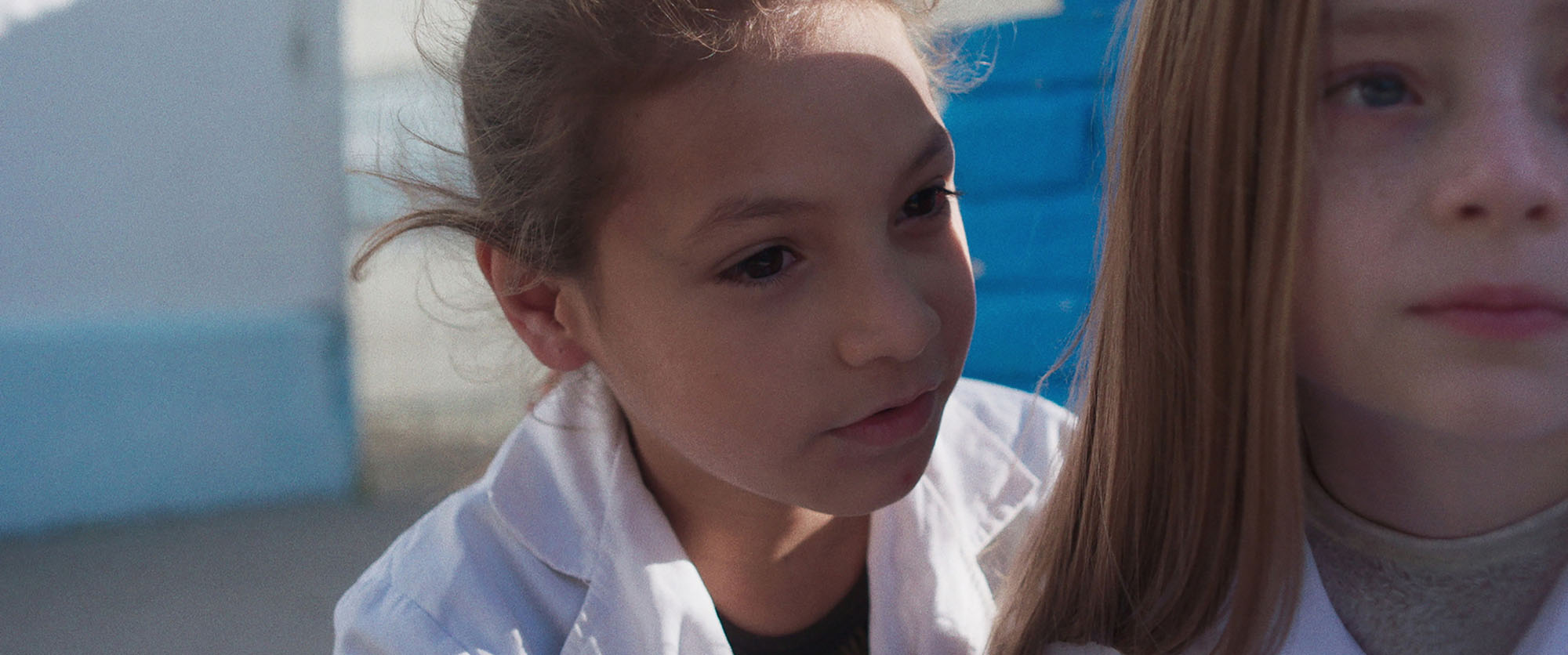
For Ema, everyday life at school finally begins. At the beginning, she was often accompanied by her parents, but then more and more on her own. Together with her classmates, she sits quietly at lunch, takes out her toy horse every now and then, which she lets run across the table, or she simply gets up and walks behind the curtains. Her classmates like to accompany her, especially when Ema wants to feel the self-made things hanging in the classroom. Irene in particular, the granddaughter of the school’s janitor, discovers a great interest in Ema and an important friendship develops between the two.
Her parents are also coping well with the new situation. The father becomes involved in the village and wants to farm a community field for more independent self-sufficiency, and the mother can always be seen to be relieved that Ema has obviously found a safe haven. Also, they can now fulfill Ema a big dream…. A horse of her own which, as it turns out later, is also pregnant. This is for the family like a symbol of hope for a beautiful future and this wish is also fulfilled.
Conclusion:
A picture is worth a thousand words is a popular saying and it applies to this film as well. It is basically as silent as Ema herself and yet it is a clear insight into the world of children with said autism spectrum disorder. These children often live a shadowy existence in our society and they tend to meet with more rejection when it comes to care, though I don’t want to condemn this because dealing with such children requires a lot of patience and not everyone can muster that. In “Una escuela en Cerro Hueso” it went well and in the credits you learn that after Ema’s graduation the school gained a better and better reputation and the requests for the care of children with ASD increased.
What still interested me at the end of the film was whether the main actress also had ASD or whether this was just an act. To my surprise, it was purely an acting performance by the child and the film can also be seen more as a kind of documentary.
Actors:
Clementina Folmer (Ema)
Mara Bestelli (Julia)
Pablo Seijo (Antonio)
Irene Zequin (Irene)
Ariel Núñez (Tanzpartner)
Mónica Núñez (Sonia)
Carla Rucitti (Schulleiterin)
Viviana Taus (Lehrerin)
Director:
Betania Cappato
Info about the film:
https://www.berlinale.de/en/programm/programm/detail.html?film_id=202106142
